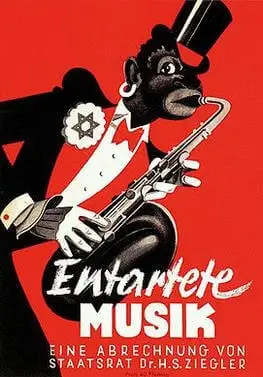Spend time on social media, especially text-based sites like Bluesky (that’s what I use—and enjoy—now after deleting my account at the neo-Nazi’s site) and you eventually find people decrying a lack of media literacy. What they mean by that is the ability to see the difference between assertion and fact, to know what’s reporting and what’s stenography, to tell when a headline for a story is misleading. And that’s important for all of us, especially as the federal government, supported by many excited voyeurs in the news media, starts waging its war on a American society.
I’ve realized that since January 20, I’ve been arguing a complementary complaint, which is for cultural literacy. The thing about social media is that political takes are more prominent than anything else—it’s often like being at a bar where no one’s talking about the weather or sports, and also there’s nothing to drink—and so political writers and thinkers are more prominent than most other people. Those people have their cultural takes too, almost always confident and superficial and uninformed in the same manner as the media illiteracy they decry. Hey, we all have our knowledge and experience, we all have the time and effort we spend researching and understanding, we can’t be experts in all things.
But we can be literate. That’s the media-literacy point, which is that readers should have skills that journalists claim to have but only infrequently demonstrate. This is even more acute for cultural literacy, which is the foundation for media literacy, and not vice versa Think of it this way: a newspaper story reports certain things, but how do you know those are facts? Within the story—especially the contemporary manner in which political stories often ignore context and history—you can’t, you have to go outside that, find other sources, research and compare. That’s exercising media literacy.
But there’s another way, the culturally literate way. The great poet Joseph Brodsky got at this in his 1987 Nobel acceptance speech (Brodsky was a great Russian poet under Soviet rule, defected, learned English, and became a great poet in his new language). In it, Brodsky talked about developing literary taste, and what it can do for a person:
Every new aesthetic reality … can in itself turn out to be, if not as guarantee, then a form of defense against enslavement. For a man with taste, particularly literary taste, is less susceptible to the refrains and the rhythmical incantations peculiar to any version of political demagogy. The point is not so much that virtue does not constitute a guarantee for producing a masterpiece, as that evil, especially political evil, is always a bad stylist. The more substantial an individual’s aesthetic experience is, the sounder his taste, the sharper his moral focus, the freer – though not necessarily the happier – he is.
That is cultural literacy, and with it you can tell inside a news article if it’s fact or propaganda. Read good writing and you’ll recognize good writing and the good thinking behind it, and you’ll know bad writing—bad style—by the bad thinking behind it. When you know good writing, you know immediately when you read AI slop that it’s pure, brute force predictive auto-complete (and trained on bad style), and despite the wasteful energy and money behind it, no more intelligent than the paper these words are printed on.
That’s reading, and it’s fundamental, but what about music, what about jazz, which I’m supposed to be writing about. Like good writing, the cultural literacy that comes through good music helps you cut through ersatz product, garbage, phoniness, not just the literally phony AI music that has been injected into streaming services but the endless hype for the newest poptimism package. Jazz, as one of the greatest styles, something that demands the greatest style from its practitioners, is a defense against evil.
On the issue of our own national nightmare, jazz is essential to our cultural literacy. Made by Americans as a uniquely American thing, it’s both
linchpin between the blues and, via Louis Armstrong, the foundation for every single second of modern pop music around the globe. Jazz is one of the most important cultural products in human history. Jazz is both a popular art and a high/abstract art simultaneously in a way that no other medium or genre can claim, not even film. If you’ve got jazz in you, you have the best defense and offense against the bullshit, the bullshit they want to do to you, and the bullshit they want to sell you, the bullshit they want to put over on you.
Let’s talk jazz literacy then, as a component of cultural literacy. I’m not going to recommend or argue for specific musicians or styles, because the thing about jazz is that if you start getting into it, you find all the big names, because they’re big for a reason. It’s not like The Strokes or Jason Aldean or Lana Del Rey. Musicians like Armstrong, Duke Ellington, Charlie Parker, Miles Davis, John Coltrane, Billie Holiday, and Ella Fitzgerald built jazz because they were giants, and, standing on these shoulders, the music is monumental and spectacular. It is free of hype and bullshit, immune to political winds and consumerist fashions. It has roots laid deep in time and is always of the present moment.
This starts with the fundamental question, can you play? To play jazz well, you essentially have to be a motherfucker, it’s the merit-based music par excellence. Stance and packaging will get you nowhere. Then, once you can play, do you have something to say?
And this is where I want to specifically focus on the mainstream of jazz, the playing. We don’t need high concepts or the heroic quests of free jazz, or even specific political arguments, just having something to communicate, and being able to articulate it. A brand new example of this is the excellent new album Tippin’ (Cellar Live) from drummer Carl Allen. This is a trio session for Allen, saxophonist Chris Potter, and bassist Christian McBride (with pianist John Lee on one track), the group plays standards and originals and every moment is stellar, not a moment of palaver, everything these guys play is not just interesting but full of gripping vitality.
That is the fundamental point and process of jazz, playing together, improvising a conversation, creating a spontaneous consensus. Consensus is the key term: jazz is important in how the foundation of improvisation, with various degrees of structure (call them songs), focuses around building a consensus through a series of shifting moments in time. The lead voices, playing melodies and improvised solos, are never free of the rest of the band, which improvises along with them in a supporting role that can develop into complex and thrilling collective music making. It’s people working together and also with leadership. I could write a million times on a chalkboard that music making is a social activity, and jazz like this is the ne plus ultra of that activity, going back to the first roots of humans making music together, collapsing the most ancient past with the present.
Building social consensus from the ground up is fundamentally American. One of the perverse advantages that jazz has in the marketplace is that since there’s no money in it, there’s essentially no commercial pressure to be packaged, to conform, to follow, to pander to the mediocre and infantile taste of our contemporary cultural arbiters. To quote a true nonconformist musician, “Freedom’s just another word for nothing left to lose.” Choose that consensus.
To get back to cultural literacy, and defense against evil (or the mediocrity of capitalism, which is the same thing), jazz makes you hip, helps you see what’s around you, and is a great marker for who to associate with and who to say away from. People who don’t get jazz aren’t going to help you, or us, people who dislike it, well, the context and history is that in 1938 the Nazis mounted a public exhibition of Entartete Musik (Degenerate music), with the notorious poster of a racist caricature of a Black man wearing a Star of David and playing a saxophone. That’s the side that delivers Nazi salutes on live television, the other side is jazz, humanism, America. Start from Tippin’ and proceed fiercely into the future.
Author
-

George Grella wrote the book on Miles Davis’ Bitches Brew. He write other stuff too. killyridols.substack.com/
View all posts
George Grella wrote the book on Miles Davis’ Bitches Brew. He write other stuff too. killyridols.substack.com/










